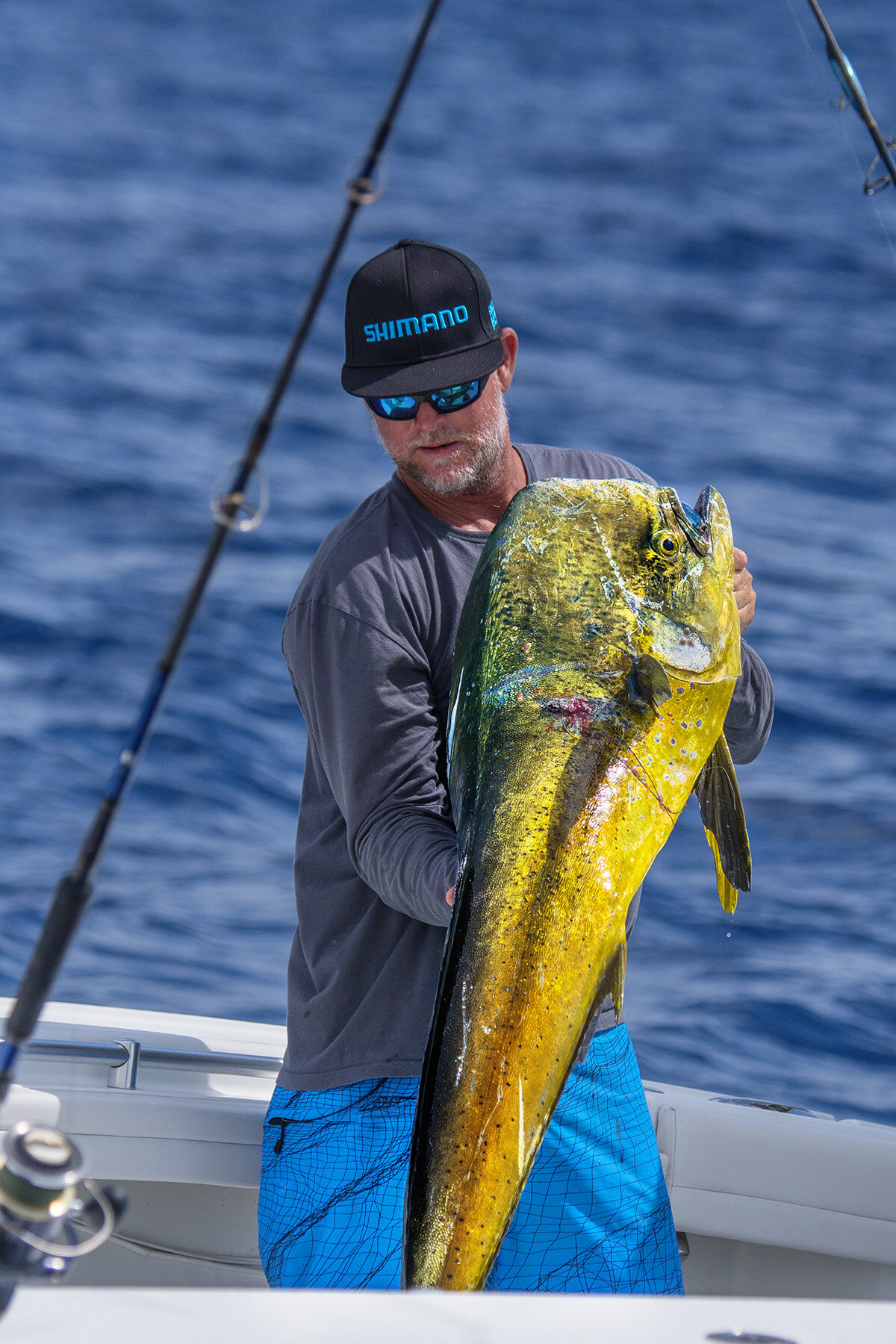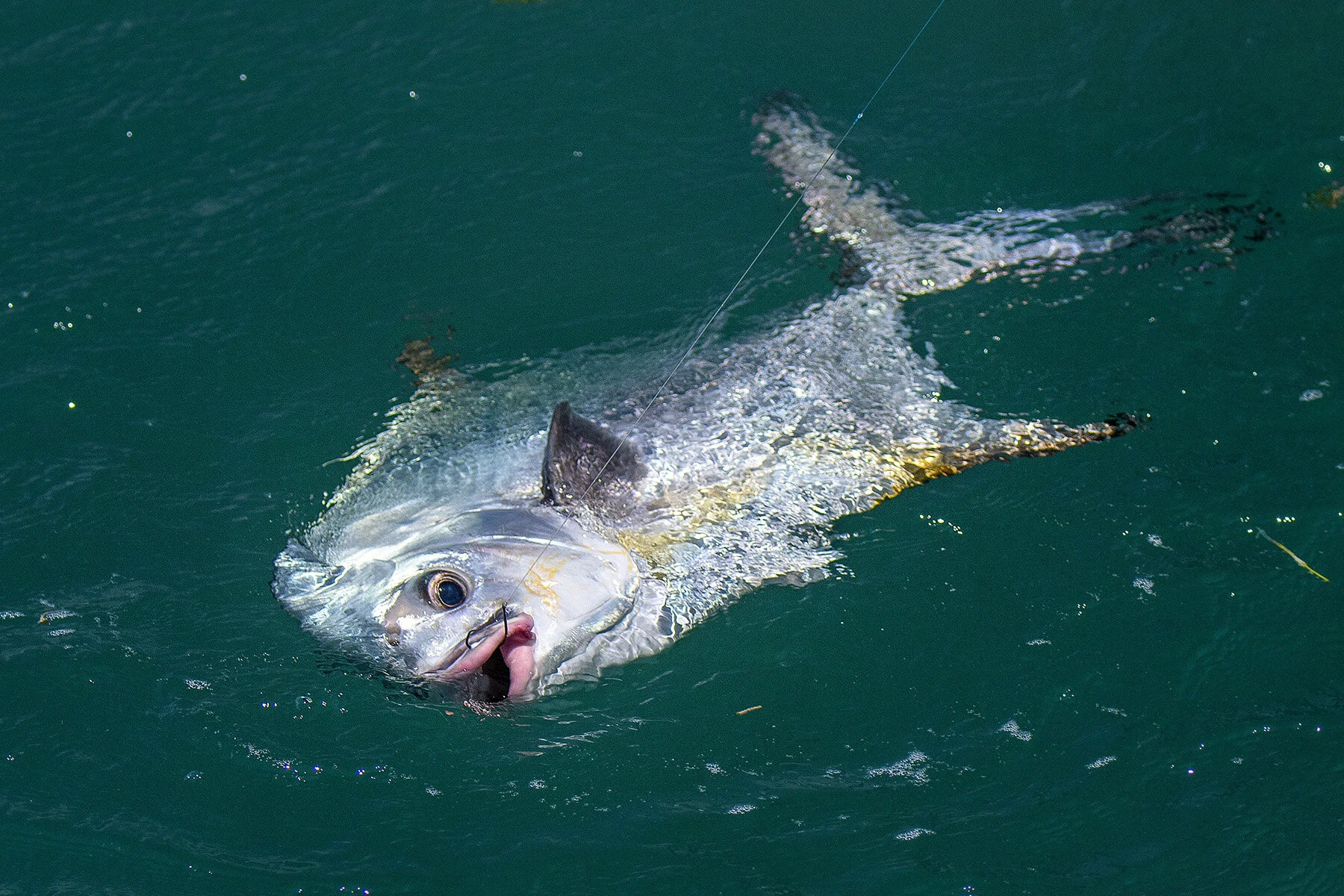Two Quick Tips for Mahi-Mahi Fishing
written by Evan Anderson
When Captains Steve Rodger and Scott Walker head out swordfishing, they’re always prepared for anything. And anything, in this case, is Mahi-Mahi (commonly known as dolphin fish). “When we’re fishing for one specific thing, we’re always packed for something else, something a little greater,” says Rodger, “Whether it be some rigged up marlin lures or some live bait to drop to the bottom ...In the saltwater when you head out you need to have a plan of more than what you’re after. And that plan for me when we’re swordfishing is for mahi-mahi.”
Starting off with an amazing swordfish catch, our two captains realize that on the other side of the boat there is a 40 pound, 5-foot long Mahi just floating there. Frantically they grab their rods and start casting in hopes of reeling in the monster. And thus begins a plentiful day of Mahi fishing. Here are 2 tactics our experts utilize to haul in the big ones.
1. Topwater Lures
According to Walker, Mahi are always eating. They’re a voracious eater and a ferocious fighter on the end of our captains’ Power Pro lines. “These fish live their whole lives eating,” says Walker, “and their number one fish is the flying fish.” Topwater lures emulate flying fish extremely accurately, according to Rodger. When that 40 pounder appeared on the other side of their boat, Rodger tossed in a Shimano Orca Topwater line (available at West Marine) and the fish jumped right on it.
Another key related to a Mahi’s insane appetite is persistence. When Rodger and Walker threw their Power Pro lines into the water to try their luck, the same fish alternated between both lures. It would bite onto Rodger’s, then get off and have at Walker’s. Rodger, who eventually caught the fish, said it bit his lure 5 times.
Rodger’s preferred rig for fishing these spots is what he calls “The Knocker Rig”. He says, “It’s basically just...a sinker on your line, and then a hook. No swivel. The sinker actually rides right down on top of the hook.” He then adds a pilchard (sardine) onto the hook for bait. It’s a simple setup but extremely effective. It’s not long before they start hauling in loads of fish.
2. Finding Mahi-Mahi
Once the two had had a taste of Mahi fishing, they were out for blood and headed to “The Hump”, an underwater mountain 25 miles offshore in the middle of the Gulf Stream that attracts loads of fish. “This constant upwelling brings nutrients to the surface,” explains Walker over the roar of the Mercury Marine motors, “which brings squid, which brings flying fish, which brings dolphins, tunas, marlins…..and lots of little boats from all over the place.” This hump is a huge fishing hub and loads of guides know it. So if you’re headed out there just know that there will be a lot of people fishing, as Walker mentions here.
Once over “The Hump”, Walker and Rodger begin searching for signs of Mahi. The first thing to look for is birds. Flocks of birds dive-bombing the water mean that there are fish near the surface. This is a good indicator that there is debris in the water, another important thing to look for when hunting Mahi. Since fish love structure, floating debris will attract small fish like Amaco jacks which will attract larger fish like Mahi or marlins. Here, Rodger and Walker come upon half of a plastic flower pot floating on the surface of the water surrounded by jacks. It doesn’t have to be big, it just has to be there.
If you find some debris and the fish surrounding it just don’t seem to be what you’re looking for, trolling is another tactic to try when going after Mahi or swordfish. “We call it fishing in the blind,” says Walker, “but it’s an effective way to do it.”
@ SE Multimedia 2019
Itching for some mahi-mahi action? Check out the full episode below and watch Walker and Rodger haul in some big ones (with some hilarious flubs in between) on S11:E5 of Into the Blue.


















